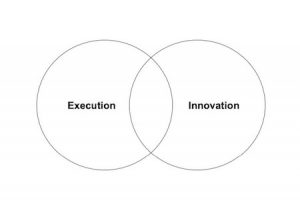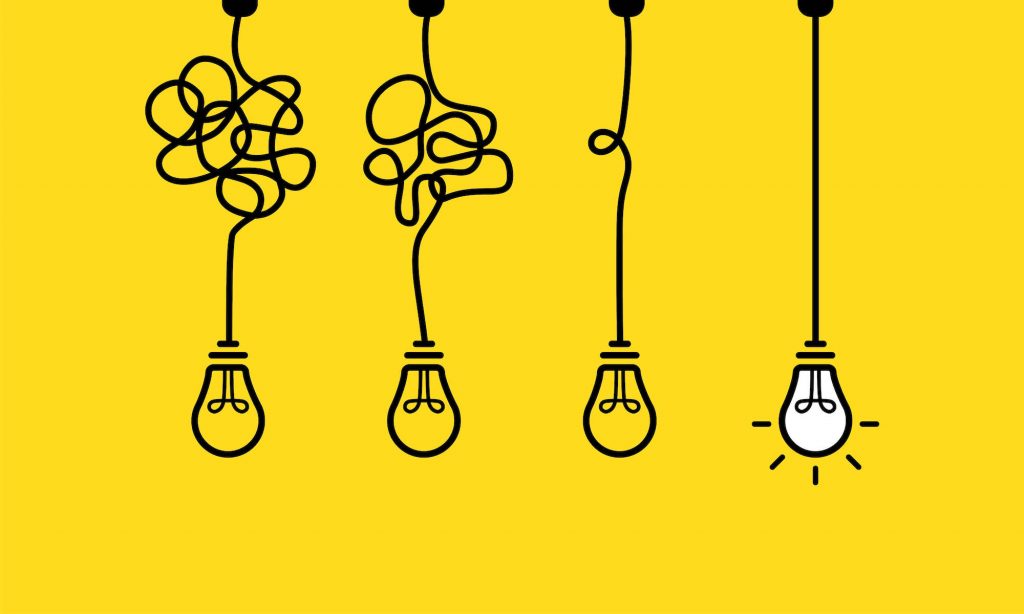
BMNT Editor’s note: This is the fourth in a series explaining the common beginner-steps needed to get an innovation practice off the ground or improve an existing innovation practice. Find our first post, explaining the goals of implementing a structure to guide innovation and training workers how to use it, here. The second installment, on how to create an innovation thesis to guide your team’s activities, is here. The third piece, on how to assemble the right team for the job, is here.
GUEST POST from Brian Miller
Steve Blank, the godfather of Silicon Valley, says that “for innovation to contribute to a company or government agency, it needs to be designed as a process from start to deployment.” At the start, you need a steady influx of new project ideas to replace and restore eroding capabilities. Investors refer to this influx as “deal flow,” and it is considered the single most important factor in their success. Here are the key principles and practices to generate the deal flow your innovation practice needs to succeed.
1. Open your pipeline wider than you feel comfortable
It’s cliche to say this, but get comfortable with the uncomfortable. It may take hundreds of initial problems to find a few dozen pilot projects, and only a handful of successful programs may result from those pilots. A rigorous process, like the Innovation Pipeline®, ensures you manage the risk and uncertainty of innovation along with your finite resources. When venture capital investors raise a fund, they initially invest only about 40 percent to 60 percent of it. Cash reserves, known as “dry powder,” are held back so investors can quickly invest more in the early bets that pan out. Translating this to the government, resources are first invested in validating a project (explore). Only after validation are significant investments made in deploying a new capability (exploit).

The Innovation Pipeline
To get started, you must first understand what you’re doing and where problems will come from. Are you gathering problems from your organization’s workforce (if you’re trying to improve your structure, processes, and culture), your customer base (if you’re trying to improve their job), or both?
If the former, you could use or create an internal portal, akin to a digital comment box with more rigor. If the latter, you could use a tool like SurveyMonkey or something more sophisticated. If that’s not feasible right away, just do it manually. An innovation pipeline needs a lot of inputs at the beginning in order to produce disruptive solutions at the end. It’s the fuel for innovation, so walk the halls of your organization, cold-call your customers, or deputize people already embedded in key places to be your eyes and ears, spotting and assessing opportunity by collecting problems for you.
2. Scope and prioritize problems at the atomic level to find the right project ideas
You will need to see a lot of problems, and rigorously assess them, to find the needs that will lead to transformative change. You cannot be too selective up front, so prepare for the volume by using a simple framework to deconstruct problems into their atomic units.
A Key Beneficiary has a basic need in order to achieve a desired outcome. This problem-centric approach will help you scope and prioritize all the in-bound opportunities so you can easily focus on certain beneficiaries or certain desired outcomes.
Pro-tip: If your pipeline is brand-new, focus on a beneficiary group that you can co-opt, like insurgents, to build momentum in your organization. Or focus on the desired outcomes that align to your organization’s stated and published strategic priorities. If you’re still stuck, revisit your innovation thesis (or create one if you haven’t already) to help guide your problem sourcing and triage in-bound opportunities.
3. Respond to everyone
Do not leave hundreds or thousands of people hanging if you collect their problems. If your problem sourcing is yet another black box in a large organization, apathy will quickly set in and your projects will dry up. Rather than leave problem-submitters guessing, be honest with them about (1) how you will decide what will get worked on, and (2) that not everyone’s problem will get worked on directly. This communication can be as simple as a Senior Leader announcement at a town hall, or it can be memorialized in an Innovation Doctrine that lays out the fundamental principles that guide coordinated action in your organization.
Pro-tip: the best innovation programs provide all problem owners with valuable information in exchange for their input. For example, pointing them in the direction of the office that can help them solve a simple problem; connecting them to someone experiencing a similar one, so they can band together; or just showing them a dashboard of your deal flow so they can see where their problem ranks or fits with others. A transparent and responsive innovation practice keeps contributors motivated to pursue their ideas and contribute to new ones in the future.
4. Look for patterns
Not every problem will get worked on. Even with infinite resources, you must prioritize based on your innovation thesis. However, seeing patterns in hundreds or thousands of problems, even the ones you set aside, will reveal the root cause of something greater. For example, you may find lots of problems related to testing new software. Instead of fixing each one, fix the process for testing, evaluating, and approving new software tools, eliminating an entire category of problems in one project.
5. Generate short, descriptive problem statements
Your success or failure is based on a disciplined commitment to problem-centric innovation. The best way to keep yourself honest is to initially frame projects as problem statements that provide sufficient background on the origins of the problem to be solved. This kick-starts the next stage of innovation (Curation) and ideally identifies (for the purpose of recruitment) at least some of the key stakeholders around a problem, their basic needs, and an early definition of success.
Pro-tip: a great problem statement should be shareable with and understandable by anyone. The goal is to present a clear articulation of the opportunity and to expand the coalition around the problem so that others can help you solve it.
Next, you’ll rigorously assess and prioritize your problems, and you’ll begin to interview and observe people affected by them. In the next post, we’ll share more insights on how to do it, so you know you can trust the data that results and amplify the confidence in your decisions.
Image credits: BMNT, Pixabay
![]() Sign up here to get Human-Centered Change & Innovation Weekly delivered to your inbox every week.
Sign up here to get Human-Centered Change & Innovation Weekly delivered to your inbox every week.


 Government organizations seeking alignment between innovation and execution can borrow from this common practice in order to increase confidence in their investment decisions. Recall from the last post that innovation projects are not simply smaller versions of existing programs. Resources are first invested in validating a project (explore). Only after validation are significant investments made in deploying a new capability (exploit). Government leaders feel comfortable making investments in the former, but not the latter. The common risk management approach is simply avoidance, because the rewards of innovation projects seem distant and uncertain. This is magnified in the national security community, where lives are on the line and no-fail missions are prevalent.
Government organizations seeking alignment between innovation and execution can borrow from this common practice in order to increase confidence in their investment decisions. Recall from the last post that innovation projects are not simply smaller versions of existing programs. Resources are first invested in validating a project (explore). Only after validation are significant investments made in deploying a new capability (exploit). Government leaders feel comfortable making investments in the former, but not the latter. The common risk management approach is simply avoidance, because the rewards of innovation projects seem distant and uncertain. This is magnified in the national security community, where lives are on the line and no-fail missions are prevalent. 
